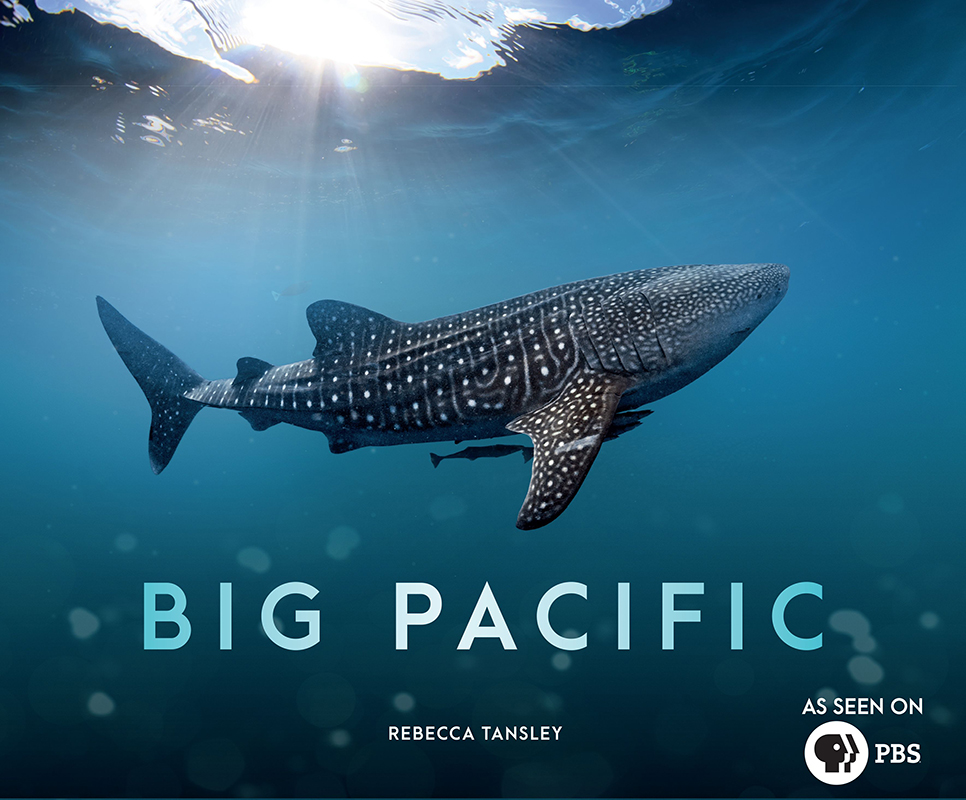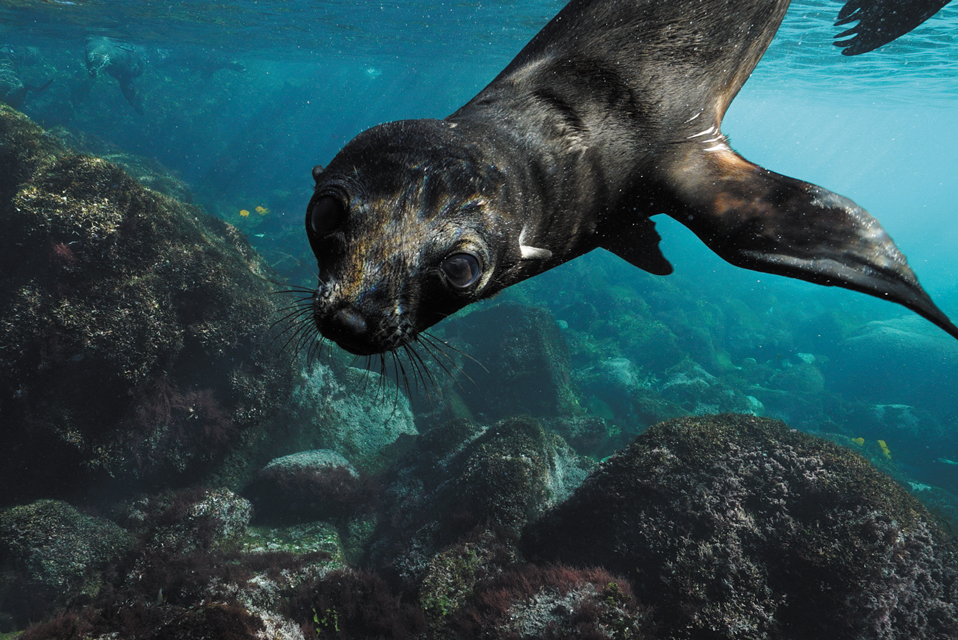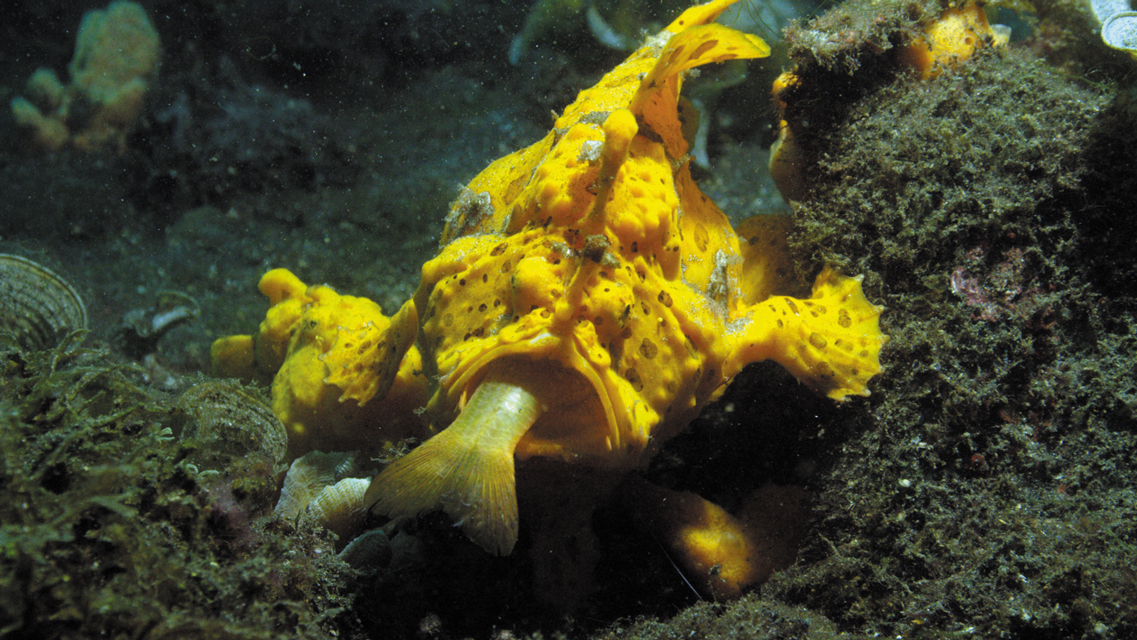Mysterious Sea Creatures Surface in 'Big Pacific'

It holds about half of Earth's liquid water, covers approximately 64 million square miles (166 million square kilometers) and extends deeper than any other body of water on the planet. The Pacific Ocean is familiar and mysterious at the same time, with much of its watery domain still unexplored by humans and many of its inhabitants yet to be discovered.
But a new five-part television series is offering a glimpse of this hidden world. From tiny, glowing squids to enormous whales, the creatures that call the Pacific Ocean their home take center stage in "Big Pacific," produced by NHNZ, the natural history unit of New Zealand media company Television New Zealand, and presented on PBS in the United States. And arresting moments from the program are captured in the book "Big Pacific" (Princeton University Press, 2017), a photographic and written companion to the five-part series.
Reflecting the organization of the "Big Pacific" television episodes, the book is divided into four categories that represent aspects of the natural world in the ocean: "Passionate," "Mysterious," "Voracious" and "Violent" (these are also the titles of the first four episodes of the TV series). The series' fifth and final episode describes how the filmmakers captured the breathtaking imagery, and these behind-the-scenes moments are woven throughout the book. Both the book and TV series also incorporate the impact of human activity on ocean habitats.
Author Rebecca Tansley, who collaborated closely with the television series' producers to bring the book to life, told Live Science how the photos and narratives came together. [See stunning photos of sea creatures from the book "Big Pacific"]
This Q&A has been lightly edited for length and clarity.
Live Science: How did you become involved with the "Big Pacific" book project?
Rebecca Tansley: I had a long-standing relationship with NHNZ, the production company that made the series. I project-managed the production of books based on some of their series. I have a foot in both camps — I'm a writer and a filmmaker. I understood the process that they'd be going through to make the series and how I would need to fit into that in order to write the book, select the images and put it all together. For me, it was the perfect project. It drew on my background, my interest in natural history, and my love of research and storytelling.
Sign up for the Live Science daily newsletter now
Get the world’s most fascinating discoveries delivered straight to your inbox.
Live Science: How did you select which stories would be featured most prominently in the book?
Tansley: I was provided with some of the narration scripts — typically they were in a first stage. NHNZ was still working on the program. But I would get a sense of the episodes and the content. I was provided access to research information. They had a lot of fact sheets, which the researchers had compiled. I only had to do supplementary research.
I would read through scripts for the program, and I identified the species and places that were covered in each episode. Then, I sat down with an editor at NHNZ and looked through all the footage relating to that particular episode and collected kind of a rough edit of still images based on what imagery was in the program. From there, I went with what I thought people would be interested in knowing about each of those species and where they fit into the overall ecosystem, but always with a view to shed light on why they might be in a given episode. For example, the "Violent" episode — you wouldn't necessarily imagine humpback whales would be featured in an episode about violence, but their heat run [when many males chase a single female] definitely demonstrates degrees of aggressive behavior that we don't usually associate with baleen whales.
In the book, I had the opportunity to build on the information communicated in an hour of TV. It was a dream job, because I got to learn a lot about the animals and the places and share that information.

Live Science: Was there a marine species you were especially looking forward to writing about, and did you find any new "favorites?"
Tansley: One of my all-time favorite animals has always been otters. So, I was looking forward to writing about sea otters — but the footage they got of otter mating and sea otters feeding, well, they weren't the strongest visuals. They were fine as moving images, but weren't as dynamic in stills, so I didn't write a lot about otters. But I did find out some interesting stuff. They have the densest fur in the world — that's how they manage to stay so warm in cold water.
Some of the animals [that] I really enjoyed finding out about I was surprised by, because they're not sexy megafauna. Like the Chinese horseshoe crab, which is probably by most people's standards pretty ugly. But its story is one of such brilliance and survival against the odds, you can't help but feeling that it's sort of charming. It's sobering to think that this species that's survived for so long is now threatened by the development that's going on along the coastlines of its habitat.
Another one was the firefly squid, off the coast of Japan. These little squid are just a few centimeters long. The images are so beautiful, and the way they rise up from the deep and light up the ocean for just a short time and release their eggs — I suppose I fell in love with them because it was a wonderful story. It was a reminder of how diverse and how fascinating the oceans around us are.
Live Science: Which Pacific Ocean habitats intrigued you the most?
Tansley: I found the Snake Island story very interesting. It's an island full of these pit vipers, which are pretty much unique to the island. They sleep most of the year and have evolved to feed only on migratory birds that land on their way to their summer feeding grounds and on their way back. The pit viper wakes up and feeds for [a] short period of time, then the rest of the year, it lies dormant. I think that was really intriguing. [Cats and Snakes and Monkeys, Oh My! 9 Islands Ruled by Animals]
Galapagos, of course, was really interesting — ironically, the habitat is threatened by tourism, by the hordes of people who want to go experience that habitat. That's an irony that wasn't lost on me.

Live Science: As a writer, how do you shape a story out of a topic that covers so many diverse species and habitats?
Tansey: When I was first approached to do the book and I was shown the script, my first thought was, 'That's not going to work in book form!' Voice-over scripts work well in television, but it doesn't work writing like that in a book. That's why I took the approach I did — looking at the species and places in each episode, and writing about them in a way that takes them back to the overall theme of the program, but also fleshing out those characters more and imparting more information. I wasn't trying to give the same information about every single species — their life expectancy, their breeding habits — it wasn't a species-by-species rundown. I tried to keep it more readable and more varied, just highlighting what I thought were the interesting stories about those characters.
Live Science: What would you like people to take away from reading the book or watching the series?
Tansey: I would hope they'd have a real appreciation for the diversity and the natural history of the Pacific. I hope the book will perhaps trigger people to think about their own interaction with the ocean and their own impact on the ocean. I live in New Zealand, which is a Pacific nation — for me, it was always present, I grew up within a stone's throw of the sea. We all came from the ocean. We should really respect it. That's what I hope people take home.
Live Science: The title of the first section in "Big Pacific" — and of the first episode in the series — is "Mysterious." Has writing this book dispelled any of the mystery that the Pacific Ocean holds for you?
Tansey: I think if anything it's gained more. I learned an enormous amount about places I've never heard of, but it's like when you study a subject at university — the more you learn about it, the more you appreciate how little you know, and the more it makes you want to know. It really only deepens the mystery.
The fourth episode of "Big Pacific" airs on PBS July 12, and the entire series is available to view online. "Big Pacific" by Rebecca Tansley is available on Amazon.
Original article on Live Science.

Mindy Weisberger is an editor at Scholastic and a former Live Science channel editor and senior writer. She has reported on general science, covering climate change, paleontology, biology and space. Mindy studied film at Columbia University; prior to Live Science she produced, wrote and directed media for the American Museum of Natural History in New York City. Her videos about dinosaurs, astrophysics, biodiversity and evolution appear in museums and science centers worldwide, earning awards such as the CINE Golden Eagle and the Communicator Award of Excellence. Her writing has also appeared in Scientific American, The Washington Post and How It Works Magazine. Her book "Rise of the Zombie Bugs: The Surprising Science of Parasitic Mind Control" will be published in spring 2025 by Johns Hopkins University Press.










